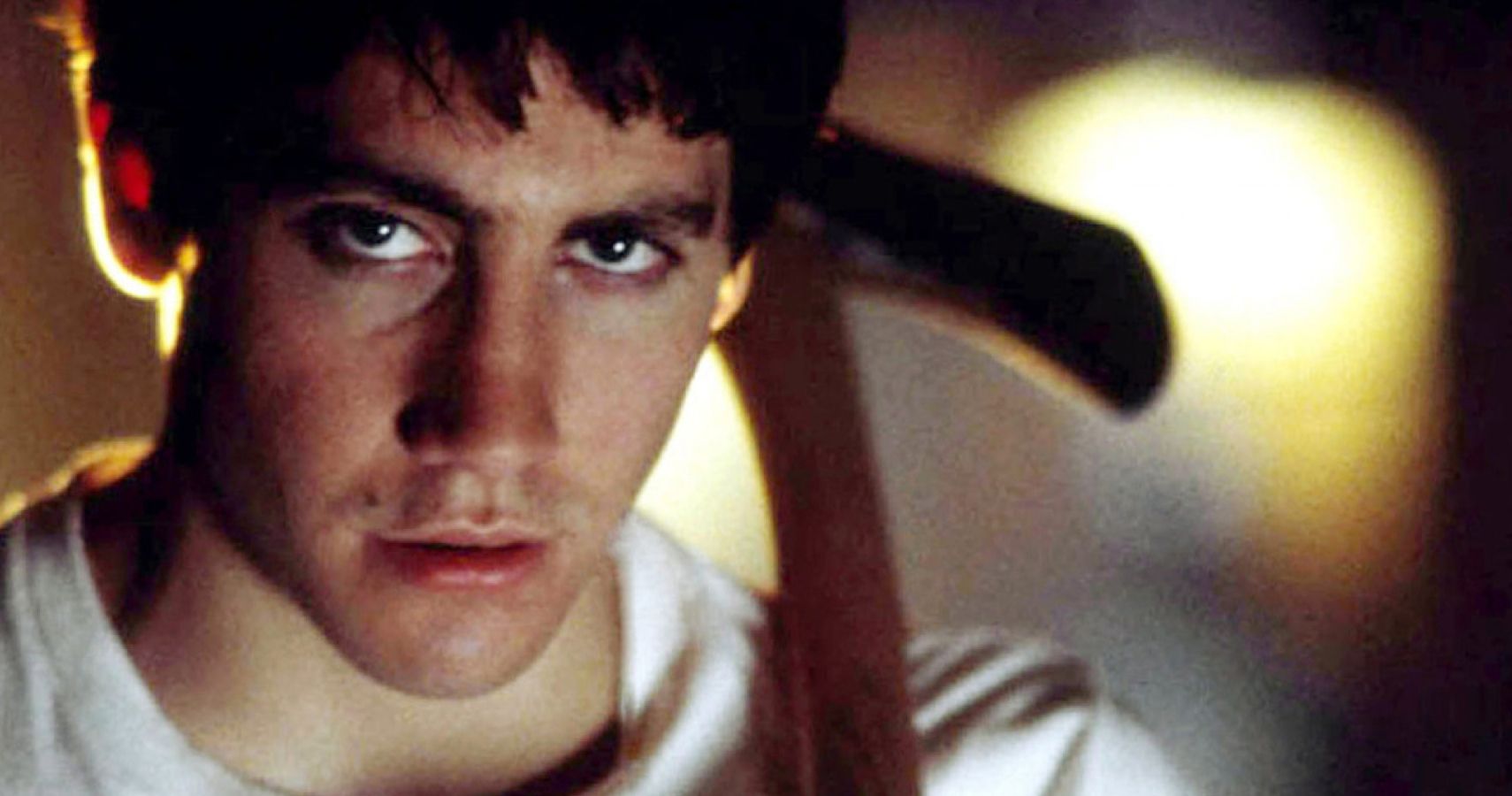Richard Kelly's 2001 coming-of-age feature Donnie Darko combines science fiction, familial drama, and mental illness in compelling ways. The star-studded film stars Jake Gyllenhaal as a high school student caught up in an apocalyptic plot that may or may not be a figment of his imagination. Maggie Gyllenhaal, Drew Barrymore, Noah Wylie, Jenna Malone, and Patrick Swayze co-star.
Donnie Darko transpires over the month of October 1988 in Middlesex, Virginia. Much of the film's beauty lies in its nostalgic attitude about the decade, as well as in its explorations of youth. After its lackluster theatrical release, Donnie Darko went on to earn a cult following, with fans hailing it as one of the most important science fiction films of the new Millenium.
The Film Is Richard Kelly's First Full-Length Feature
Donnie Darko proves to be an ambitious debut feature for Richard Kelly, who was in his mid-20s when it was released. Kelly told the BBC, "I thought about a jet engine falling onto a house, and no one knowing where it came from," eventually building "the story around that."
Kelly spent years struggling to get the film financed, mostly because he was so uncompromising about his vision. "I set out to write something ambitious, personal, and nostalgic about the late '80s," he also told the BBC.
It Almost Went Straight To Video, But Drew Barrymore's Production Company Saved It
After screening Donnie Darko at the 2001 Sundance Film Festival, the lack of response led Kelly to believe the movie would be released straight to video. Fortunately, Drew Barrymore came to the rescue.
Barrymore's production company, Flower Films, decided to finance the film. Barrymore also stars in the film as English teacher Karen Pomeroy.
Christopher Nolan Helped Give It A Wider Release
Director Christopher Nolan, who made his US feature film debut with 2000's Memento, convinced production company Newmarket to distribute Donnie Darko. Nolan was enthusiastic about the movie after screening it.
Unfortunately, Donnie Darko's theatrical release occurred a month after the September 11, 2001, terrorist attacks. Since a plane crash features prominently in the movie, marketing for Donnie Darko was nearly non-existent.
To Match The Film's Timeline, It Was Shot In 28 Days
The events of Donne Darko transpire between October 2 and October 31, 1988. Jake Gyllenhaal's title character suffers from sleepwalking bouts. The film begins with a sleepwalking Donnie leaving his home, where he travels to a local golf course.
At the golf course, Donnie is met by a figure in a large rabbit suit who tells him the world will end in 28 days, 6 hours, 42 minutes and 12 seconds. From there, Donnie embarks on a journey involving time travel, quantum physics, and violence. Kelly filmed the movie in 28 days to mirror this chronology.
Richard Kelly Was Encouraged To Make It More Contemporaneous
While Kelly's collaborators and filmmaking friends encouraged him to set Donnie Darko in the present, he was adamant the film should take place in 1988. According to Flickering Myth, Kelly told his dissenters, "No, it has to be in 1988! It has to be October of 1988, in the build-up before the Bush-Dukakis election."
Donnie Darko was hailed as a testament to the '80s. Long before the nostalgia for sci-fi yesteryears spawned the release of series like Stranger Things, Donnie Darko set the standard.
Frank Is Inspired By The Novel Watership Down
The giant bunny rabbit who stalks Donnie Darko throughout the film refers to himself as Frank. The ominous character is inspired by Richard Adams's dystopian novel Watership Down.
In Watership Down, anthropomorphic rabbits in southern England sort out a new life for themselves after their natural habitat is ruined. The book is interpreted as a giant metaphor for the human experience.
The Movie Received Modest Box Office Success
Donnie Darko was released on October 26, 2001, in the wake of the September 11 terrorist attacks. In was shown on just 58 screens across the US over its opening weekend, which led to a lackluster debut.
By the end of its run in US theatres, Donne Darko earned just above $500 thousand dollars. Internationally, though, it did much better, bringing in over $7 million.
Jake Gyllenhaal Says He Still Doesn't Understand The Movie
The 2003 The Donnie Darko book, written by Richard Kelly, includes a forward from Jake Gyllenhaal. In it, the actor describes his experience making the film. Gyllenhaal was just coming onto the scene when he made the film.
In his forward, Gyllenhaal explains he still doesn't really understand Donnie Darko, but he thinks the film isn't meant to be understood. Gyllenhaal loves the elusive, philosophical undercurrents that make the film so perplexing and compelling.
Richard Kelly Was Not Involvement With The Sequel, S. Darko
Thanks to its releases on DVD and Blu-ray, Donnie Darko developed its cult reputation. The home media formats earned millions. A 2005 double-disc director's cut also proved to be a massive success.
In 2009, filmmaker Chris Fisher released S. Darko, a sequel of sorts featuring Donnie Darko's younger sister, Samantha, in the title role. Richard Kelly separated himself from the film in the media, making it clear he had nothing to do with its production. S. Darko turned out to be a bomb.
The Gary Jules Cover Of Tears For Fears's "Mad World" Topped The UK Charts
One of the most beloved aspects of Donnie Darko is its stellar soundtrack, which revels in '80s rock and pop music. Singer Gary Jules recorded a piano-driven, slowly paced version of Tear For Fear's song "Mad World" for the film, and his rendition became a hit overseas.
Jules worked with composer Michael Andrews on the "Mad World" cover, which eventually topped the music charts in both the UK and Portugal.











